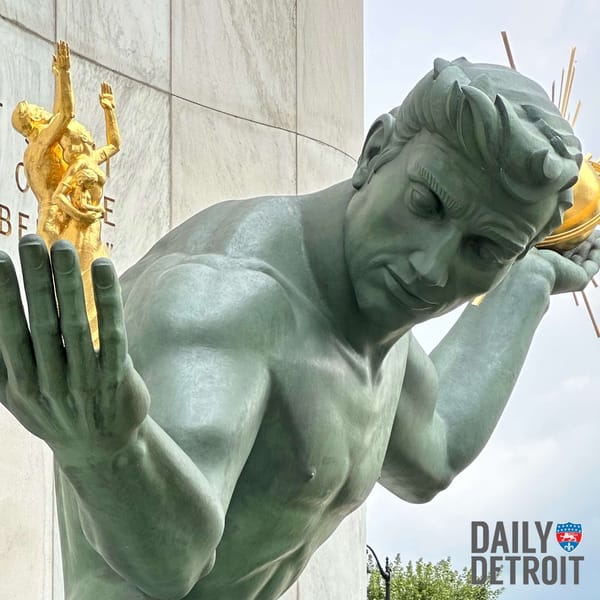The Detroit Institute of Arts is one of the buildings that seems to have always been part of Detroit. Its cultural importance and clout make it an important fixture of Detroit history, but the DIA as we know it only came along in 1927.
Up until that time, Detroiters visited the Detroit Museum of Art, located at 704 E. Jefferson Avenue. While the museum only served the city for 40 years, its impact is unmistakable and laid the foundation for the DIA.
The Detroit Museum of Art opened in 1888. Before then, Detroiters would visit art loan exhibitions, basically touring museums that came through the city. Fortunately, the 1883 Detroit Art Loan Exhibition gained enough attention from the public to foster the creation of a board to start a permanent museum in the city.
According to Historic Detroit, The project was funded by several of Detroit’s prominent citizens, including Senator Thomas Palmer, Russell A. Alger, and James E. and George H. Scripps. After some careful planning, the Detroit Museum of Art was founded on March 25, 1885. A month later, on April 16, the museum was incorporated.
There was still the issue of money, though. Despite the men’s generosity, the museum still didn’t have enough to purchase a site or construct a building. To solve that problem, the museum board launched what we could call a crowdfunding campaign that lasted eight months. About 2,000 people donated more than $100,000 to the effort. By March 1886, the board for Detroit Museum of Art had enough money to proceed with planning.
The board spent much of 1886 looking for a site and an architect for the building. It finally settled on land presented to the museum as a gift by a collection of landowners. The land was located at the southwest corner of Jefferson and Hastings, where Jefferson and I-375 intersect today.
The location, in addition to being free, was the site of General Hugh Brady’s home. Brady was a war hero, having fought in the American Revolution with General Anthony Wayne, for whom Wayne County and Wayne, Michigan, were named.
To build on the site, the board would have to agree to destroy Brady’s colonial home, which still remained on the site. In 1887, Brady’s home met the wrecking ball to make way for the Detroit Museum of Art.
After securing the site, the board needed to determine a design and an architect for the building. The museum had to be fireproof, face Jefferson Avenue, and not exceed a $40,000 price tag (a little less than $900,000 in today’s dollars). There were 52 designs submitted by well-known architects. The building committee selected James Balfour’s design, called “Wisdom, Strength, and Beauty.”
The building in Balfour’s design was created in the Richardsonian Romanesque style that was popular at the time. The design included arches, turrets, and round arched windows. The first floor would hold sculpture galleries and offices. The second floor would hold paintings. Museum visitors reached the second floor by climbing the winding stairs in the building’s corner towers.
While the Detroit Museum of Art was the first of its kind in the city, its completion didn’t generate much excitement at all. It officially opened to the public at 7 p.m. on September 1, 1888. The paintings on display at the museum’s opening were actually borrowed from other Detroiters’ private collections.
Unfortunately, the first exhibit, which ran for two and a half months, attracted fewer than 25,000 visitors. It also earned the museum a net loss of $1,842.14.
The museum’s flop opening didn’t deter James Scripps from setting out to collect art from around the world and gifting his prestigious collection to the museum in 1889. That same year, the first art school affiliated with the museum opened.

Over the next few years, the museum would receive donations from art collectors, and in 1893, space in the museum became limited. It was time to consider expanding. On January 31, 1984, after a fundraising campaign that lasted about a year, construction started on the museum’s expansion.
The expansion was finished in 1897, and yearly attendance at the museum reached more than 90,000. When the 1900s arrived, the museum found itself in desperate need of more room. Having used all of the available land it currently occupied, the museum had to move.

In January 1919, Detroit Mayor James Couzens created the first Arts Commission, led by Ralph H. Booth. Notable Detroiters on the commission included Edsel B. Ford and Albert Kahn. That October, the Bulletin of the Detroit Institute of Arts was born, and the art became the property of the city in December 1919.
While Kahn didn’t design the DIA, he hand-picked Paul Philippe Cret, who submitted a proposal in 1920. On April 29, 1924, the cornerstone of the DIA was laid at Woodward Avenue. During the DIA’s construction, the Detroit Museum of Art continued to serve as the city’s cultural beacon. In July of 1927, the Detroit Museum of Art closed.

The DIA opened on October 7, 1927.
The building that housed the Detroit Museum of Arts continued to stand proudly over Jefferson Avenue. It was given to the Public Welfare Department and then the Veterans Administration.

In February 1957, the City of Detroit announced that the building would be demolished to make way for construction of a freeway, what we call I-375 today. Note the church in the far left of the frame. That church – Christ Church Episcopal – still stands today on Jefferson Avenue. Three years later, in 1960, the museum that started and ignited Detroit’s love of art, was razed.
Editor’s Note: If you’re looking for stories and photos of beautiful buildings that are no longer with us, let us recommend a very cool book. It is called “Forgotten Landmarks of Detroit” and you can pick it up from the author here. It’s on our office coffee table.











